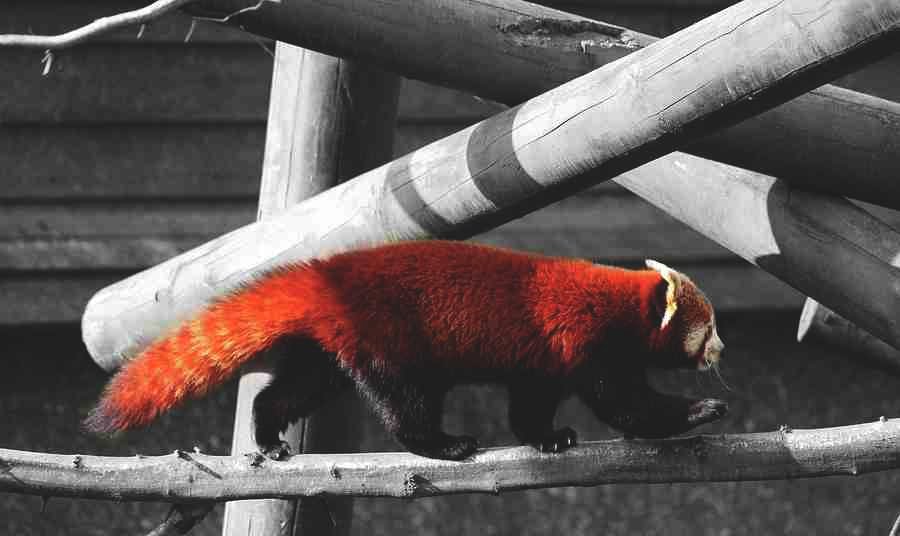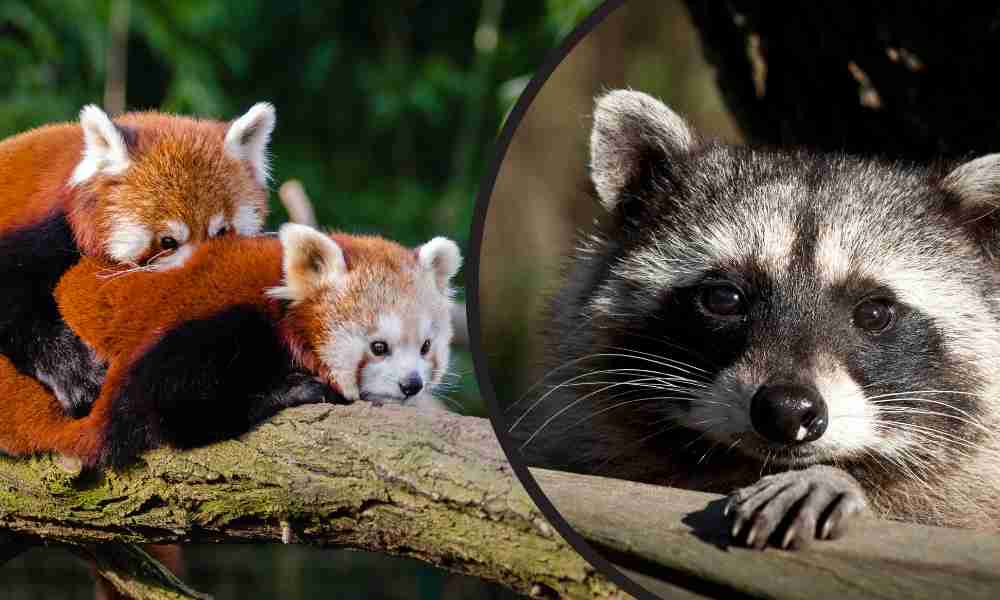Due to the close physical resemblance of red pandas and raccoons, you may wonder whether they can mate.
Can these two animals create a crossbreed?
Here’s a quick answer – NO
Red pandas and raccoons cannot breed. It is practically impossible for these two animals to breed due to several reasons.
Below are some of the main reasons why these two creatures can never breed:
- Different mating behaviors and signals
- Solitary habits
- Different habitats
- Reproductive rate
- Genetic differences
In this article, I will discuss in detail these 5 major reasons. Let’s continue reading below!
Genetic Differences
Genetically, the parental molecules must be homozygous for red pandas and raccoons to breed.
Simply put, the DNA from these two species has to resemble each other to create a hybrid offspring that can survive.
It is scientifically impossible for red pandas and raccoons to breed. Creating a hybrid from these two small animals with different genetics might result in giving birth to an entirely different breed.
While other animals can breed and produce hybrids, red pandas and raccoons can’t. The DNA cells of red pandas and a raccoon have different units of chromosomes.
Red pandas have 42 chromosomes or 21 pairs. On the other hand, Raccoons have 36 chromosomes or 18 pairs.
For this reason, red pandas and raccoons are species with different pairs of chromosomes that can’t produce viable offspring. They do not share the same DNA units…
If they find a way of mating, the produced red panda-raccoon hybrid will die shortly after being born.
When the two breed, the parental molecules will not become complementary for pairing, resulting in an offspring incapable of surviving.
Different Mating Behaviors and Signals
Red pandas and raccoons have different mating behaviors and signals.
The red panda will not recognize a raccoon’s signal in any way. On the other hand, a raccoon will also not identify the sexual behavior of a red panda.
Raccoons’ sexual attraction happens at a different time from that of red pandas. They always show breeding signals and behaviors when it is their mating season.
Red pandas’ scent-marking increases during the mating season.
During mating times, these red pandas start interacting with each other. The male red pandas attract the female by urinating and rubbing their genitals to leave a scent behind.

The female red pandas may produce scents to attract the male. The smell is stronger and always inviting to the male during this time.
The male and female red pandas have these scent-marking behaviors when they are ready to mate. Raccoons do not recognize this behavior.
For raccoons, the female may scream during mating season. It may sound like a fight from January to May, but it is their signal.
The female raccoons may scream loud to invite the male for sexual interaction during their heat period.
Male raccoons might be in a group of up to four during the mating season. The groups of four usually position themselves against invaders and other foreign males.
There is no way a male red panda can get through to a female raccoon.
Although female red pandas might also make some noise during the breeding season, it is very different from raccoons’ screams.
The different modes of how these two animals communicate might be another barrier to why the raccoons and the red pandas fail to breed.
The raccoons might not identify the red pandas’ behavior of producing a stronger scent when they are in the breeding season.
And the red pandas may not understand the raccoons’ screams. Raccoons cannot express their interest in mating with red pandas.
Solitary Habits
Red pandas are famous for their solitary lifestyle. Many also consider male raccoons loners. The solitary nature of these two animals can never bring them together.

If there was an interaction between the raccoons and the red pandas, it might result in their breeding. However, these animals are always alone most of the time.
Male raccoons primarily interact with female raccoons during the mating season. The same applies to the red pandas. They only interact during their mating.
Now that raccoons and red pandas are loners, breeding between the two is difficult. There is no interaction between these two animals that might result in mating between them.
Different Habitats
Mainly raccoons live in mixed forests with tall trees in Southern parts of America. The red pandas live in the bamboo forests, mainly in the Himalayas and mountainous places.
Raccoons do not travel or go far from their natural habitats. Raccoons only leave when food or water is scarce. The raccoons may live for a long time in their habitat without going to the red pandas’ territories.
Living in different habitats makes these animals come across each other rarely. Their specific habitats are another primary reason why the two species never mate.
Finding these two species in the same habitat might be a rare case. Therefore their chances of breeding are relatively next to zero.
Reproduction Rate
The red pandas breed once every year during the winter. The female red pandas are on a heat cycle that lasts two to three days in January, February, or march.
On the contrary, the raccoons may not need to breed when it is breeding season for the red pandas.
The raccoons also breed once every year in between the winter months. If they do not produce during this time, the female raccoons might be on heat again after some months.
The reproduction rate of the raccoons and the red pandas is only once a year. Their sexual heat rate cycles during reproduction time are different.
This fact makes these animals never to be sexually attracted to each other.
Final Thoughts
Red pandas and raccoons can’t breed. Even though they seem to have similar physical characteristics, their mating behaviors, signals, DNA differences, and heat patterns prevent them from mating.
If a red panda and a raccoon mate, they may produce a very non-recognizable breed. The offspring may lack all the qualities that should fall into biological books.
You can share this article with your friends if you find it helpful
You may also examine the 13 key differences and similarities between red pandas and lemurs.

